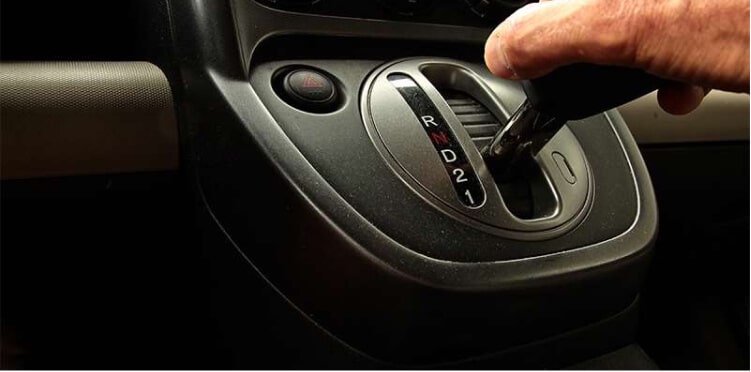Hyundai Motorstudio Senayan Park
Hyundai Motorstudio Senayan Park
Newsroom
-
6 Tips on How to Drive Automatic Car for Beginner
- Hyundai Motorstudio Senayan Park 2022.08.25
-
Thanks to their ease of driving, fuel economy, and low maintenance costs, automatic cars are now more popular than ever. But, is it true that how to drive an automatic car is easy?
Although driving an automatic car will not be as difficult as a manual car, it will be difficult for beginners who have never driven a car at all. Even for those who may be experts at driving a manual car, driving an automatic car still requires a lot of adjustment.
There are differences between manual cars and automatic cars, especially in the gear and clutch. In addition, automatic cars are available in different gear variations.
Gear Type for automatic Car
Unlike manual cars which have standard gears, 5 forward gears and 1 reverse gear, automatic cars use different gear configurations. Here are the most common variations of automatic car gears.
1. Conventional Automatic Gearbox
As the most common type used in automatic cars, the conventional automatic gearbox uses a torque converter to replace the clutch with a ratio of 3-10. The drawback is that it consumes more fuel than a manual car.
2. Continuously Variable Transmission (CVT)
Often applied to the hybrid car, CVT uses a kind of 'belt' to deliver energy to power the car. Automatic cars with CVT are efficient and reliable so the car moves more smoothly because it is not equipped with gear components. One drawback is the acceleration is slower.
3. Dual-Clutch Automatic
It is the same as the conventional automatic gearbox only without a torque converter. It uses a clutch that moves automatically. One clutch operates gears while the other is in standby position. Due to this configuration, dual-clutch automatics are often found in sports cars that require fast gear changes.
4. Automated Manual Gearbox
More like a manual gear, the automated manual gearbox will automatically select gears using the computer, instead of the pedals, to move the clutch.
This gear configuration was once popular in the automatic car segment, but poor performance and the emergence of other types of automatic gears have made this model even more marginalized. However, the majority of automatic cars for the entry level segment still use this transmission.
5. Direct Shift Gearbox
This is a wet transmission system that uses two clutches that are released alternately when shifting gears. Cars with this configuration can last for a long time for regular maintenance.
6. Traditional Automatic Transmission
The traditional automatic transmission system is better known as the automatic torque converter and is the most widely adopted for automatic cars. With hydraulic fluid or a torque converter, the transmission changes the gears instead of the clutch.
How to Drive a Matic Car
So, before driving an automatic car, it is much better if you understand the type of car you will be using. It is important to adjust the driving style for better results.
Learning to drive an automatic car for the first time can be daunting. But considering that the automatic car transmission system is simpler, it doesn't take long to become an expert. Here's how to drive an automatic car for beginners.
1. Start the Machine
Place your left foot on the brake pedal, press and start the car by turning the key or pressing the start button. There are only two pedals in automatic cars, the brake pedal on the left and the gas pedal on the right. This configuration is clearly different from manual cars which have 3-4 pedals.
2. Shift the Gears
While your foot is still on the brake, shift the gears to the D position to move forward or R to backward. The majority of automatic cars have four gear options, namely P (park), R (reverse), N (neutral), and D (drive).
As mentioned, the D position is for forward and R for reverse, while the N is for neutral and P for parking. Again, the gears may vary from one to another car. In sports cars, there is the S letter which means sport.
3. Run the Car
To start the car, slowly lift your left foot from the brake. To increase the speed, place your right foot on the gas and press slowly so the car does not stall.
4. Increase the Speed
Press the gas to increase the speed. For an automatic vehicle, the car will adjust the gear automatically. Basically, driving an automatic car is not much different from driving an automatic motorcycle. Drivers just need to understand the car body to avoid hitting surrounding objects.
5. Stop the Car
As soon as the driver reduces speed, the gear position automatically adjusts. When you want to stop, press the brake pedal until the car stops where you want it.
6. Keep Stepping on The Brakes
In the stopped position, make sure to press the brake while shifting the gears to the P position. Depending on the type of car, pull the handbrake shaft or simply press the handbrake button which is usually placed around the gear.
This will prevent the rear wheels from rolling. If you only change the gears to the P position without pulling the handbrake, the car may move. At this position, turn off the car engine and make sure the cooler is turned off, the charger is removed, and the windows are closed.




